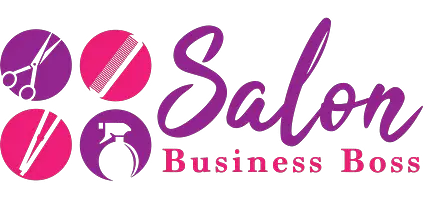The hair salon industry has long been a cornerstone of the beauty and personal care sector, catering to millions of customers seeking haircuts, styling, and various treatments. Amidst the allure of creative expression and the satisfaction of customer transformations, salon owners must navigate the complexities of managing a profitable business.
The average profit margin for a hair salon is about 8.2%. This metric reflects the balance between revenue from services and products, and various expenses like labor, rent, and inventory. In a competitive industry with seasonal fluctuations, salon owners must focus on efficient cost control, client retention, and diversifying services to maintain a financially viable business.
Understanding Profit Margin
Profit margin is a fundamental financial metric that provides essential insights into a business’s financial performance and efficiency. By quantifying the percentage of revenue that translates into profit after all expenses have been deducted, it offers a clear picture of a company’s ability to generate earnings from its sales.
The profit margin ratio is calculated by dividing the net profit, which represents the money left after deducting all costs, including operating expenses, taxes, and interest, by the total revenue generated during a specific period. This simple calculation reveals how much profit a business retains from each dollar of sales.
A high profit margin indicates that a company effectively manages its costs and generates significant profit from its operations. This not only suggests financial health but also reflects strong operational efficiency and competitive advantage. On the other hand, a low profit margin may signify that a business is struggling to control expenses or facing pricing pressures in the market.
Business owners and investors use profit margin as a key benchmark to compare companies within the same industry or across different sectors. It helps them assess a company’s profitability relative to its revenue, enabling them to make informed decisions about investment, expansion, and business strategies.
Components of Profit Margin
The profit margin of a hair salon is influenced by various factors, with revenue and expenses playing a pivotal role. Let’s delve into the key components that determine the profit margin of a hair salon.
1. Revenue Generation:
The revenue generation for a hair salon primarily stems from the various services it offers to clients. These services encompass a wide range of hairstyling options, such as haircuts, hair styling, coloring, and hair treatments. Additionally, beauty-related treatments like facials and waxing may be included in the salon’s service menu, contributing to its revenue stream. Beyond services, hair salons also generate revenue through product sales. Items such as shampoos, conditioners, hair care accessories, and styling products are sold to customers looking to maintain their hair between salon visits.
To enhance revenue, salon owners often implement strategic initiatives. Offering premium services that cater to more specialized and demanding clientele can command higher prices and lead to increased revenue. Loyalty programs encourage repeat visits and reward loyal customers, fostering stronger customer relationships and generating consistent revenue. Collaborations with other beauty businesses, such as makeup artists or nail salons, can create cross-promotional opportunities, expanding the salon’s reach and attracting new customers.
The ability to attract and retain a loyal customer base is pivotal to a hair salon’s revenue growth. Positive experiences, exceptional service, and a welcoming ambiance can foster customer loyalty, encouraging clients to return regularly for their hair care needs and contribute significantly to the salon’s overall revenue and profitability.
2. Cost of Goods Sold (COGS):
The cost of goods sold (COGS) in a hair salon mainly comprises the direct expenses associated with providing services and selling products to customers. These costs encompass several components that impact the salon’s financial health and profit margin.
One significant component of COGS is the compensation of hairstylists and technicians. Their salaries and commissions account for a substantial portion of the salon’s expenses, as they are at the heart of service delivery. Skilled and experienced stylists may command higher salaries, but their expertise is essential for providing quality services that attract and retain clientele.
Another aspect of COGS involves the cost of hair care products and consumables used during treatments. Hair salons must maintain an inventory of various hair care products, such as shampoos, conditioners, hair color, and styling products. Additionally, consumables like towels, foils, and disposable gloves contribute to COGS.
Controlling COGS is crucial for maintaining a healthy profit margin. Salon owners often negotiate favorable deals with product suppliers, explore bulk purchasing options, and monitor inventory levels to avoid overstocking and wastage. By optimizing these direct costs, hair salons can maximize their profitability and financial sustainability.
3. Operating Expenses:

Operating expenses are the indirect costs incurred in running the day-to-day operations of a hair salon. These expenses encompass a wide range of business-related expenditures and play a significant role in determining the salon’s overall financial performance.
One of the most substantial operating expenses for a hair salon is rent or mortgage payments for the salon space. The location and size of the salon can significantly impact this expense, with prime locations commanding higher rental costs.
Utilities, including electricity, water, and heating, also contribute to operating expenses. Hair salons require adequate lighting, temperature control, and water supply for providing services efficiently and comfortably.
Insurance is a vital operating expense, providing coverage against potential risks, such as liability, property damage, and worker’s compensation. This protects the salon from unforeseen incidents and legal claims, ensuring business continuity and stability.
Advertising and marketing costs represent another component of operating expenses. Effective marketing strategies are essential for attracting new customers and promoting the salon’s services and products. Salon owners may invest in online marketing, social media campaigns, and local advertising to reach their target audience effectively.
Administrative salaries, including receptionists and office staff, are part of the operating expenses. These employees are crucial for managing appointments, customer inquiries, and overall salon operations.
Ongoing training and education expenses are necessary to keep the salon staff up-to-date with the latest trends, techniques, and industry developments. Continuously upgrading skills ensures that the salon can offer contemporary and innovative services to clients.
Understanding and managing operating expenses are vital for maintaining a stable financial position. Salon owners often analyze their expenditures, seek opportunities for cost optimization, and budget strategically to ensure that operating expenses do not exceed revenue, ultimately preserving a healthy profit margin.
Read more about: How Much Can You Earn Owning a Hair Salon? (Is it worth it?)
Analyzing the 8.2% Average Profit Margin
Having explored the components that contribute to a hair salon’s profit margin, we now investigate the industry’s average profit margin of approximately 8.2%. Understanding the reasons behind this figure can provide valuable insights into the financial landscape of hair salons.
1. Intense Competition:
The hair salon industry operates in a highly competitive landscape. With numerous salons vying for the attention of potential customers, price wars and discounts have become prevalent strategies to attract and retain clients. This intense competition can create a race to the bottom in terms of pricing, leading to compressed profit margins for many salons.
To thrive in this hypercompetitive environment, salon owners must find innovative ways to differentiate their services and stand out from the crowd. Offering unique and specialized treatments, focusing on exceptional customer service, and building a strong brand identity can help salons carve a niche for themselves and maintain a competitive edge.
2. Labor Costs:
The salaries and commissions of hairstylists and technicians constitute a significant portion of a salon’s expenses. Attracting and retaining talented and experienced stylists is essential for providing high-quality services that attract a loyal customer base. However, these skilled professionals may demand higher compensation, impacting the salon’s overall profitability.
Salon owners face the challenge of balancing the need to provide competitive compensation to retain top talent while ensuring that labor costs remain within sustainable limits. Investing in staff training and development can enhance skillsets, enabling the team to offer specialized services that command higher prices and improve the salon’s profit margin.
3. Seasonality and Market Trends:
Hair salons experience fluctuations in demand due to seasonality and market trends. For example, the wedding season or holiday periods may witness a surge in clients seeking special occasion styling, while off-peak months may see a dip in demand. Market trends and changes in customer preferences, such as shifts towards eco-friendly products or specific hairstyles, can also influence the types of services and products in demand.
To navigate these seasonal variations and market shifts, salon owners must be agile and adaptable. Planning promotional campaigns and targeted marketing efforts during peak seasons can help capitalize on increased demand. Additionally, staying informed about industry trends and customer preferences allows salons to update their service offerings and product inventory to align with market demands.
4. Inventory Management:
Effective inventory management is crucial for controlling costs in hair salons. Balancing the supply of hair care products and consumables with actual customer demand is essential to prevent overstocking and minimize wastage. Overstocking can tie up capital and lead to expired products, negatively impacting the salon’s profit margin.
By implementing a strategic inventory management system, salon owners can optimize purchasing decisions, reduce carrying costs, and ensure that popular products are always in stock. Utilizing technology and data analytics can assist in tracking inventory levels and identifying trends in customer preferences, enabling salons to make informed decisions about their product offerings.
Strategies for Improving Profit Margin
Despite the challenges faced by hair salon owners, there are several strategies they can adopt to enhance their profit margins and maintain a financially viable business:
1. Efficient Cost Control:
Implementing efficient cost control measures is vital for improving a hair salon’s profit margin. Regularly analyzing expenses allows salon owners to identify areas where costs can be optimized. This may involve renegotiating contracts with suppliers to secure better terms or exploring energy-efficient practices to reduce utility expenses. Embracing technology, such as salon management software, can streamline operations, automate tasks, and minimize administrative overheads, leading to significant cost savings.
2. Upselling and Cross-selling:
Encouraging stylists to upsell additional services or products during appointments can have a substantial impact on a salon’s revenue and profit margin. Stylists can suggest complementary treatments or hair care products to clients, increasing the average transaction value per customer. Implementing effective training and incentives for stylists can motivate them to adopt upselling and cross-selling strategies, maximizing the salon’s earning potential.
3. Client Retention and Referrals:

Focusing on customer satisfaction and retention is a powerful strategy for enhancing a hair salon’s profit margin. Satisfied customers are more likely to return for future services, reducing the need for costly acquisition efforts. Providing exceptional customer experiences, personalized services, and loyalty programs can help retain clients and foster strong relationships. Satisfied customers are also more likely to refer friends and family to the salon, creating a positive word-of-mouth marketing effect that drives new business without additional marketing expenses.
Read more about: Unlocking Potential: Hair and Beauty Salon Insights
4. Diversification of Services:
Offering a diverse range of services can attract a broader clientele and boost revenue streams. Hair salons can consider adding specialty treatments, such as hair extensions, keratin treatments, or spa services, to cater to various customer needs. Analyzing market trends and customer preferences can guide the salon in expanding its service offerings strategically. Diversifying services allows the salon to tap into new markets and attract clients seeking specific treatments, ultimately increasing overall revenue and profit margins.
5. Embracing Technology:
Leveraging technology is essential for enhancing a hair salon’s efficiency and reducing operational costs. Implementing an online booking system allows clients to schedule appointments conveniently, reducing administrative workload and the likelihood of no-shows. Customer relationship management (CRM) software helps track customer preferences, enabling personalized services and targeted marketing campaigns. Utilizing social media and digital marketing platforms can help the salon reach a wider audience and engage with customers at a lower cost compared to traditional advertising.
In conclusion, implementing efficient cost control measures, encouraging upselling and cross-selling, focusing on client retention and referrals, diversifying services, and embracing technology are strategic approaches that can significantly improve a hair salon’s profit margin. By adopting these strategies, salon owners can enhance their financial performance, sustainably grow their businesses, and remain competitive in the dynamic beauty industry.
Conclusion
The profit margin of a hair salon, averaging around 8.2%, is a crucial metric that reflects the financial viability of the business. Understanding the components that contribute to this margin allows salon owners to make informed decisions and implement strategies that can improve profitability. By focusing on efficient cost control, customer retention, and adapting to market trends, hair salons can navigate the competitive landscape and maintain a successful and sustainable business model.
Frequently Asked Questions

1. How do operating expenses affect a hair salon’s profit margin?
Operating expenses, like rent, utilities, marketing, and staff salaries, directly impact the profit margin. Managing these expenses effectively is vital for maintaining a healthy profit margin.
2. Does seasonal demand affect a salon’s profit margin?
Yes, hair salons often experience fluctuations in business due to seasonality. Special occasions or holiday periods may lead to increased demand and potentially higher profit margins.
3. How can salon owners optimize inventory management to improve profit margins?
Efficient inventory management, like minimizing overstocking and reducing wastage of hair care products and consumables, can positively impact the profit margin.
To learn more on how to start you own salon checkout my startup documents here.
Please note that the contents of this blog are for informational and entertainment purposes only and should not be construed as legal advice. Any action taken based on the information provided in this blog is solely at your own risk. Additionally, all images used in this blog are generated under the CC0 license of Creative Commons, which means they are free to use for any purpose without attribution.

About the author. Entrepreneur and Salon Business Fan.
Hi! I am Shawn and I am a happy individual who happens to be an entrepreneur. I have owned several types of businesses in my life from a coffee shop to an import and export business to an online review business plus a few more and now I create online salon business resources for those interested in starting new ventures. It’s demanding work but I love it. I do it for those passionate about their business and their goals. That’s why when I meet a salon business owner, I see myself. I know how hard the struggle is to retain clients, find good employees and keep the business growing all while trying to stay competitive.
That’s why I created Salon Business Boss: I want to help salon business owners like you build a thriving business that brings you endless joy and supports your ideal lifestyle.

